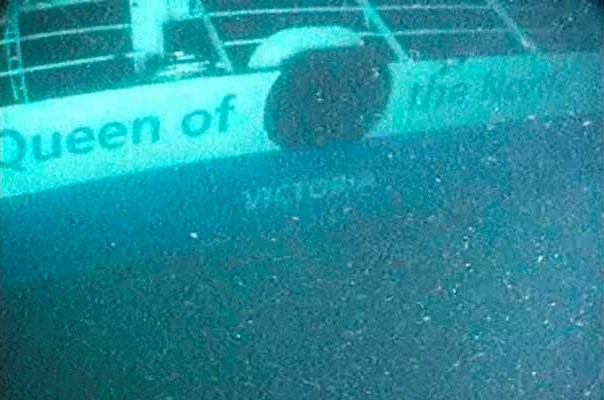Let’s start with the assumption — and I may be going out on a limb here — that no one actually wants an oil spill, and that it’s in everyone’s interest to keep Alberta bitumen out of the waters off B.C.’s coast.
What’s still up for debate is how much chance there is of that happening, should the Northern Gateway pipeline to Kitimat be built, and at what point it’s worth the risk.
This week, the National Energy Board’s joint review panel tilted in Enbridge’s favour, finding that even if there were a large spill from a tanker spill — an event it said was highly unlikely — permanent, widespread damage to the environment would not occur.
That conclusion will be a hard sell up the coast, where they like to point out that improbable doesn’t mean impossible. As the panel heard time and again, the Queen of the North plied its route with metronomic regularity for 26 years, doing so perfectly safely right up until the day in 2006 when it hit the rocks and sank, right where Northern Gateway’s supertankers would emerge from Douglas Channel.
Critics think it’s nuts to add up to 250 oil tankers a year to the inside coastal waters from which such vessels have long been effectively, if not officially, banned under the “voluntary exclusion zone” that keeps loaded Alaska oil tankers west of Vancouver Island until they reach Juan de Fuca Strait.
To that, proponents can reply that while the Alaska tankers (the ones that regularly sail past Victoria en route to Puget Sound) might be shunned from B.C.’s inner coast, another 1,500 tankers of various description have safely gone down Douglas Channel to Kitimat since 1978. They say all manner of shipping safely works the inner coast without the kind of extra safety measures that would be required of Northern Gateway traffic: double-hulled vessels, tethered escort tugs, extra navigational aids, a vetting process to ensure tankers are seaworthy.
“Northern Gateway said that over one million barrels of crude oil and petroleum products are safely shipped into and out of Canadian ports on the Atlantic and Pacific coasts each day,” the panel noted in a report that sprawled across two volumes and 493 pages.
The report discounted concerns about the challenges of navigating the area. “A letter from the Pacific Pilotage Authority noted that tankers already call on the terminal in Burnaby and pass through Vancouver’s Second Narrows, which is less than one-tenth as wide as the narrowest place in the proposed sea routes to Kitimat. The Pacific Pilotage Authority, a Crown corporation providing pilots for British Columbia ports, said the weather conditions in the routes to Kitimat were no worse than what tankers currently encounter at Canadian East Coast ports.”
While the 1989 Exxon Valdez disaster was frequently invoked by those testifying before the panel, much has changed since then, including the phase-in of double-hulled tankers. “Northern Gateway said that every large spill dating from 1970 has been from a single-hull tanker,” the report noted.
Enbridge’s opponents remain unconvinced. How can the panel possibly conclude that a spill would have no lasting effects when, at the same time, the report acknowledges that no one really knows what a spill of diluted bitumen would be like?
Critics dismiss all the talk of a “world-class oil spill response system” as window dressing. Might as well call for world-class gravediggers.
And while a spill itself might be statistically improbable, those who work on the water can rhyme off the close calls — from a bulk carrier that smashed its bow on the side of Douglas Channel in 2009 to the U.S. nuclear submarine whose captain was fired in 2011 for almost hitting a freighter in Juan de Fuca Strait.
That’s the thing about risk-benefit analyses: The outcome depends on who takes the risk and who gets the benefit.
If there is a spill, unlikely as that may be, the oil will hit the beach at Hartley Bay, not Calgary or Beijing or Ottawa.



